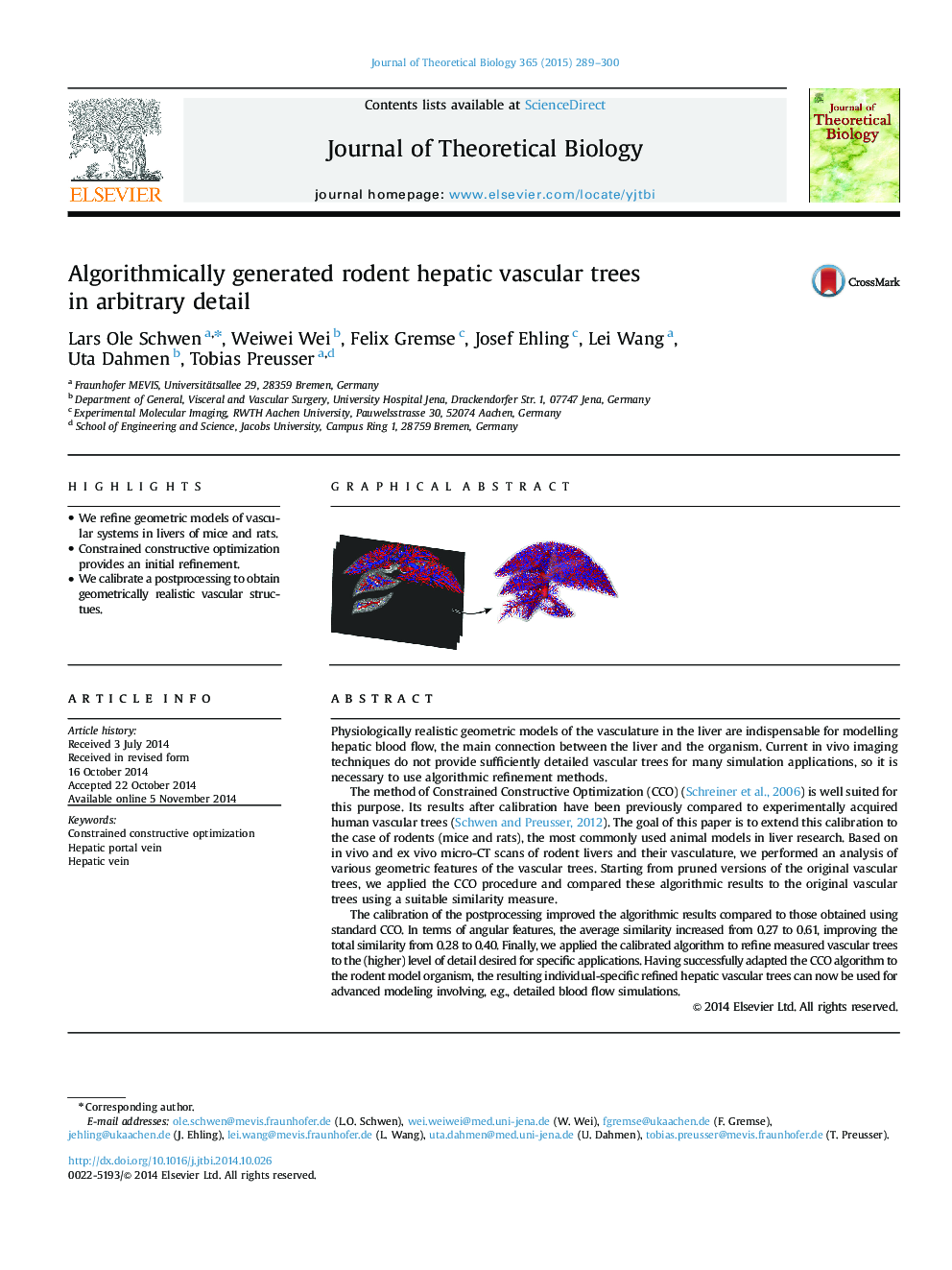| کد مقاله | کد نشریه | سال انتشار | مقاله انگلیسی | نسخه تمام متن |
|---|---|---|---|---|
| 6370030 | 1623845 | 2015 | 12 صفحه PDF | دانلود رایگان |
- We refine geometric models of vascular systems in livers of mice and rats.
- Constrained constructive optimization provides an initial refinement.
- We calibrate a postprocessing to obtain geometrically realistic vascular structues.
Physiologically realistic geometric models of the vasculature in the liver are indispensable for modelling hepatic blood flow, the main connection between the liver and the organism. Current in vivo imaging techniques do not provide sufficiently detailed vascular trees for many simulation applications, so it is necessary to use algorithmic refinement methods.The method of Constrained Constructive Optimization (CCO) (Schreiner et al., 2006) is well suited for this purpose. Its results after calibration have been previously compared to experimentally acquired human vascular trees (Schwen and Preusser, 2012). The goal of this paper is to extend this calibration to the case of rodents (mice and rats), the most commonly used animal models in liver research. Based on in vivo and ex vivo micro-CT scans of rodent livers and their vasculature, we performed an analysis of various geometric features of the vascular trees. Starting from pruned versions of the original vascular trees, we applied the CCO procedure and compared these algorithmic results to the original vascular trees using a suitable similarity measure.The calibration of the postprocessing improved the algorithmic results compared to those obtained using standard CCO. In terms of angular features, the average similarity increased from 0.27 to 0.61, improving the total similarity from 0.28 to 0.40. Finally, we applied the calibrated algorithm to refine measured vascular trees to the (higher) level of detail desired for specific applications. Having successfully adapted the CCO algorithm to the rodent model organism, the resulting individual-specific refined hepatic vascular trees can now be used for advanced modeling involving, e.g., detailed blood flow simulations.
Journal: Journal of Theoretical Biology - Volume 365, 21 January 2015, Pages 289-300
